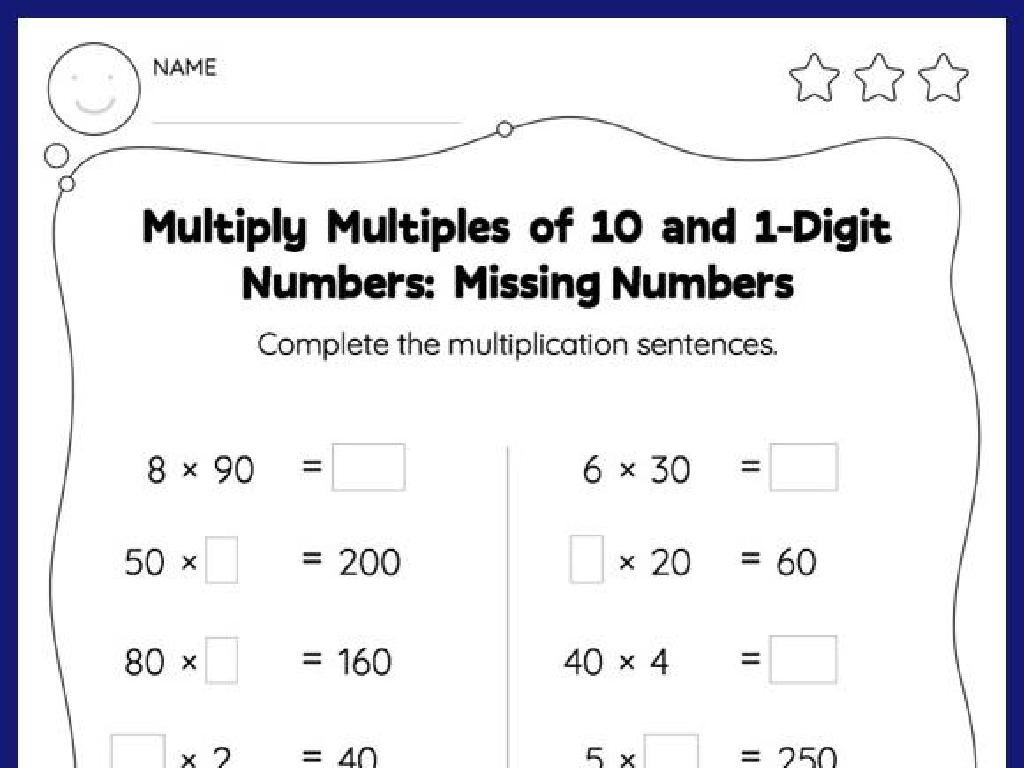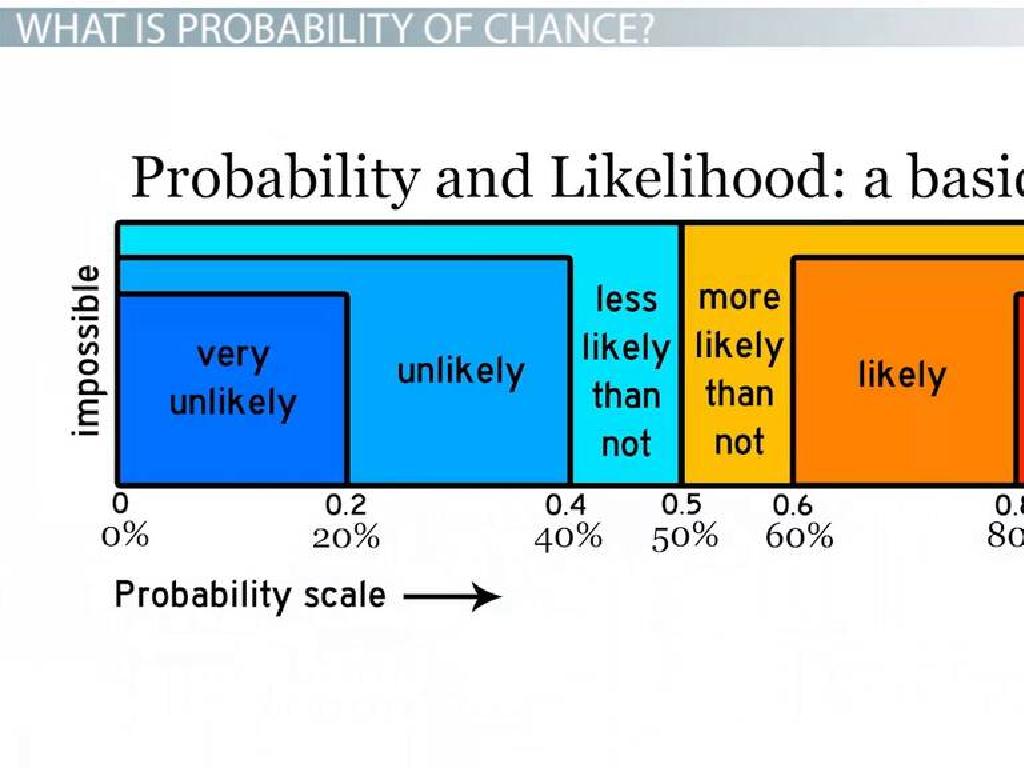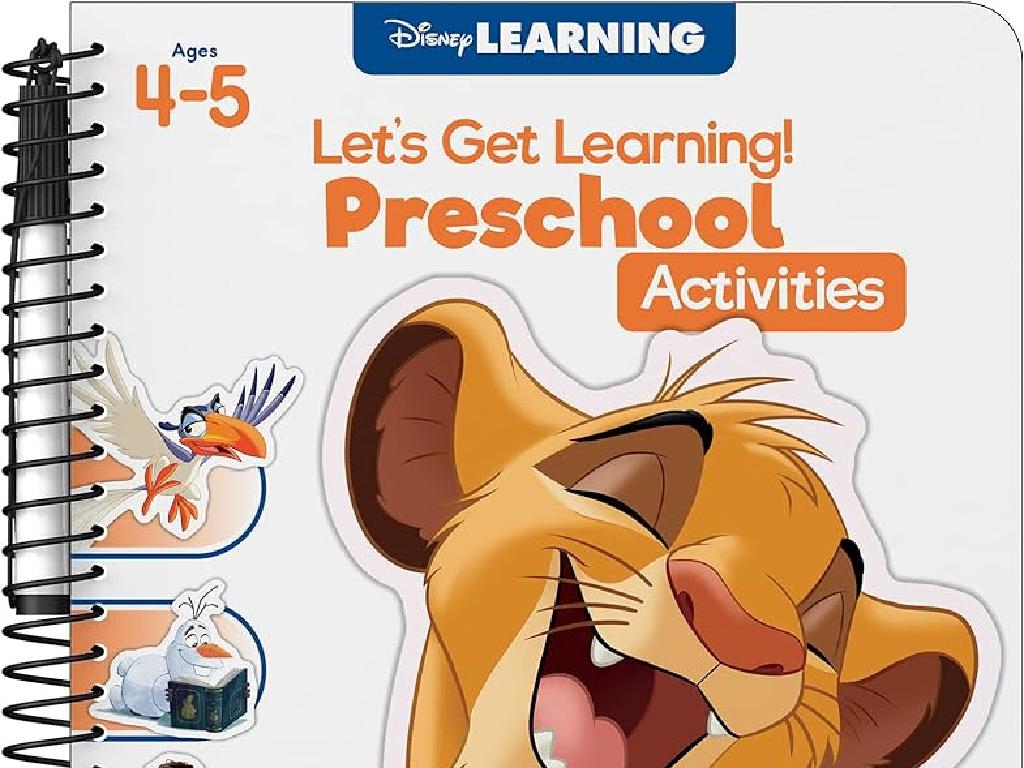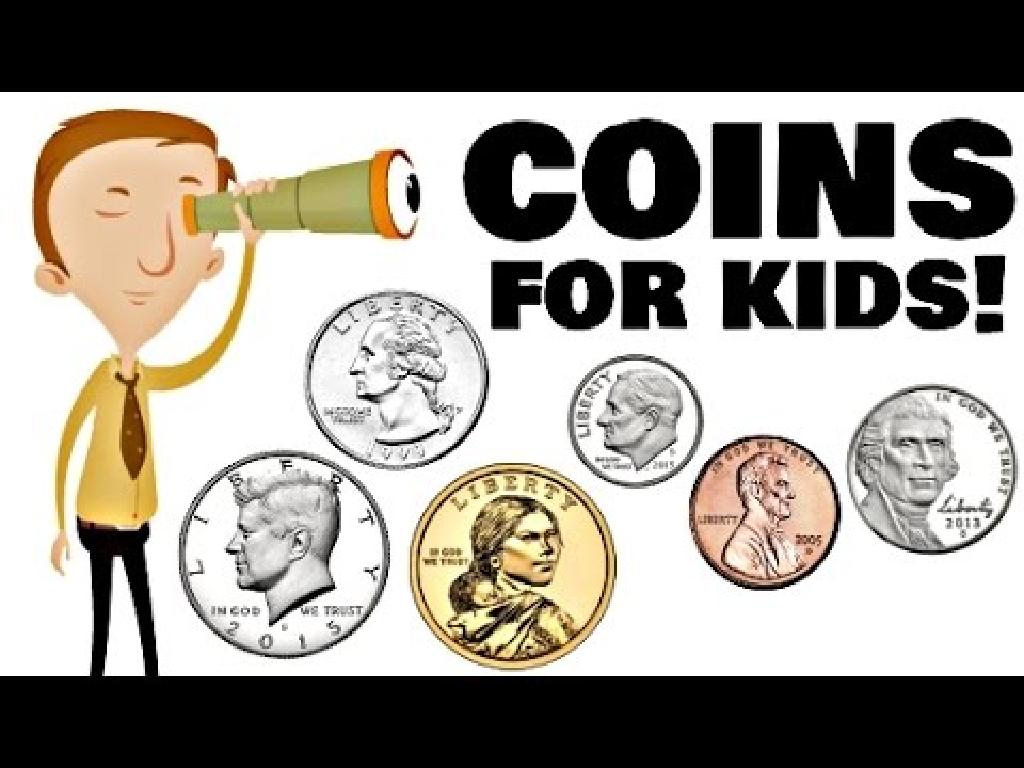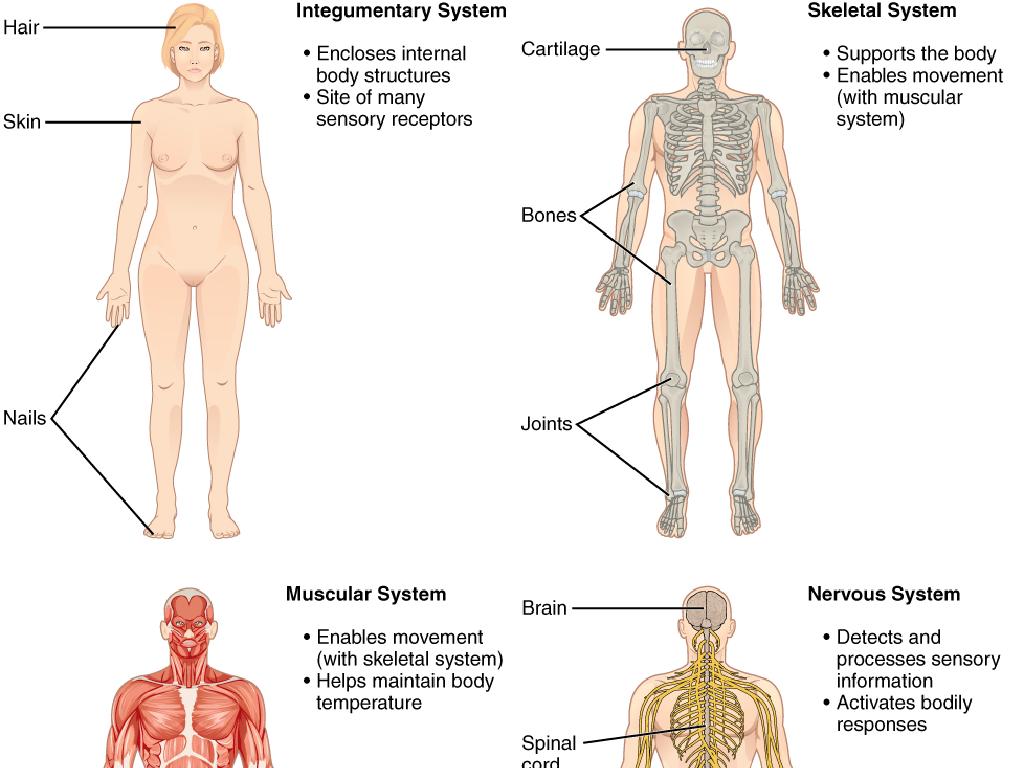Elapsed Time: Word Problems
Subject: Math
Grade: Fourth grade
Topic: Time
Please LOG IN to download the presentation. Access is available to registered users only.
View More Content
Understanding Elapsed Time
– Learn about hours and minutes
– Clock has 12 hours, 60 minutes per hour
– Define elapsed time
– Time passed from start to end point
– Importance of elapsed time
– Helps plan and understand daily events
– Practice with word problems
|
This slide introduces the concept of elapsed time, which is a fundamental skill in time management and is essential for daily planning and scheduling. Begin by ensuring students are comfortable with reading clocks, specifically understanding the hour and minute hands. Explain that elapsed time is the amount of time that passes from the beginning of an event to its end. Emphasize its importance in everyday life, such as knowing how long a class lasts, how much time is left before a favorite TV show, or how long a trip will take. Encourage students to think of scenarios where they have to calculate elapsed time. Conclude with an activity where students solve word problems involving elapsed time to reinforce the concept.
Understanding the Clock: Elapsed Time
– Review the clock face parts
– The clock has numbers 1-12, marking hours.
– Learn about clock hands
– Hour hand is short, minute hand is long, and second hand is thin and moves fast.
– Tell time to nearest 5 minutes
– When the minute hand is on 6, it’s half past the hour.
– Practice with word problems
|
Begin with a review of the clock face, ensuring students can identify numbers and understand the significance of each position. Explain the function of the hour, minute, and second hands, emphasizing the visual differences. Practice telling time by looking at where the minute hand points, associating its position with minutes past the hour. Use word problems to apply these skills, such as calculating how much time has passed between two events or determining the end time of an activity. Encourage students to use their own watches or classroom clocks for hands-on practice.
Understanding Elapsed Time
– Elapsed Time: Start to End
– Elapsed time is the time from start to end. For example, from 3:00 PM to 4:30 PM.
– Calculating Time Passed
– To find elapsed time, subtract the start time from the end time.
– Number Line for Elapsed Time
– A number line can help us see the time that has passed visually.
– Practice with Word Problems
|
This slide introduces the concept of elapsed time, which is the total time taken from the beginning to the end of an event. Start by explaining that understanding the start and end times is crucial. Then, demonstrate how to calculate the amount of time that has passed by subtracting the start time from the end time. Introduce the number line as a tool to help visualize this concept, making it easier for students to grasp. Finally, prepare to engage the students with word problems that apply these concepts, ensuring they get practical practice. Encourage students to use their own watches or clocks to relate to the concept personally.
Elapsed Time: Solving Word Problems
– Read the problem carefully
– Understand what the question is asking.
– Find the start and end times
– Look for when the event starts and ends.
– Calculate the elapsed time
– Use a clock or number line to find the difference.
– Practice with simple scenarios
– Use examples like ‘How long is a class?’ or ‘Time from breakfast to lunch?’
|
This slide is aimed at helping students tackle word problems involving elapsed time. Start by guiding them to read the problem thoroughly to understand what is being asked. Next, teach them to identify key information such as the start time and end time. Once they have this information, they can calculate the elapsed time. It’s crucial to demonstrate this process using simple, relatable scenarios that are relevant to their daily lives, such as the duration of a school class or the time between meals. Encourage them to visualize the problem using tools like clocks or number lines to find the time difference. Provide several practice problems and go through them together as a class.
Elapsed Time: Solving Word Problems
– Apply elapsed time to daily events
– How long is a class or a soccer game?
– Calculate hours and minutes passed
– If lunch starts at 12:00 PM and ends at 12:45 PM, how long is lunch?
– Step-by-step problem-solving practice
– We’ll work through problems together in class
– Review and discuss solutions
|
This slide is aimed at helping students apply the concept of elapsed time to situations they encounter every day, such as the duration of a class or a sports game. Emphasize the practicality of understanding hours and minutes in the context of their daily routines. Provide a step-by-step guide to solving elapsed time problems, and encourage students to think aloud as they work through the examples. After solving the practice problems, review the solutions as a class to ensure understanding. Use a clock with movable hands to demonstrate if possible, and prepare to offer additional practice problems for students who may need more help.
Strategies for Solving Elapsed Time Problems
– Use T-Charts for elapsed time
– Draw a T-Chart to note start and end times, then find the difference.
– Count Up and Down methods
– Start from the known time, count up to the unknown, or count down if it’s easier.
– Tips to check your answers
– Double-check by adding the elapsed time to the start time to reach the end time.
– Practice with word problems
|
This slide introduces students to various strategies for solving elapsed time word problems, which is a practical skill in everyday life. T-Charts help organize information and visually solve the problems. Counting Up involves starting at the beginning time and counting until the end time, while Counting Down is the reverse. Provide tips for students to check their work, such as verifying calculations by adding the elapsed time to the start time to ensure it matches the end time. Encourage students to practice these strategies with different word problems to become proficient in calculating elapsed time.
Class Activity: Race Against Time
– Interactive clock group activity
– Create your own time word problems
– Think about activities you do and how long they take
– Solve classmates’ time puzzles
– Use the clocks to figure out start and end times
– Discuss solutions as a class
– Share different solving strategies and learn from each other
|
This activity is designed to engage students with the concept of elapsed time through hands-on learning and peer collaboration. Divide the class into small groups and provide each group with a toy clock. Students will use these clocks to create and solve word problems related to elapsed time. Encourage them to think about daily activities and their durations to craft their problems. After creating the problems, they will exchange them with another group to solve. This will not only help them understand the concept of elapsed time but also enhance their problem-solving and critical thinking skills. As a teacher, facilitate the discussion by guiding them through different approaches to solving the problems and ensure that each student participates in the discussion.
Wrapping Up: Elapsed Time
– Recap of elapsed time concepts
– Why practice is important
Practicing helps solidify understanding and speed in calculations.
– Homework: Practice worksheet
Complete the worksheet with word problems on elapsed time.
– Be ready to discuss solutions
We’ll review the answers together in our next class.
|
As we conclude today’s lesson on elapsed time, it’s important to review the key concepts we’ve covered. Reinforce the steps to calculate elapsed time and how to approach word problems. Emphasize the importance of practice in mastering this skill, as it’s not only crucial for math but also for everyday life. Assign the provided worksheet for homework, which contains various word problems involving elapsed time. Encourage students to attempt all problems and be prepared to discuss their solutions in the next class. This will help identify any areas where they may need further clarification or assistance.

